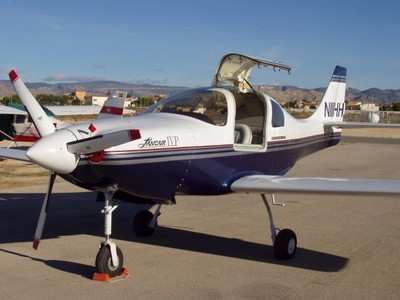Pilot Was Possibly Dealing With A Landing Gear Issue, Lost Control
One of the fundamentals of aviation is "first, fly the airplane." The pilot of a Lancair with a landing gear problem may not have followed that basic tenant, and the result was three people fatally injured.

According to the NTSB's preliminary report, on March 8, 2014, about 1858 eastern standard time, an experimental amateur built Lancair IVP, N724HP, was substantially damaged after a loss of control in Hartsville, South Carolina. The private pilot, and the two pilot rated passengers were fatally injured. Visual meteorological conditions prevailed, and no flight plan was filed for the local personal flight conducted under Title 14 Code of Federal Regulations Part 91, which departed Darlington County Jetport (UDG), Darlington, South Carolina.
According to witnesses, the private pilot had been having problems with the airplane's landing gear system and had been receiving a "Gear Unsafe" indication. Earlier on the day of the accident he was observed working on the airplane and when queried by one of the witnesses, the pilot advised him that he was troubleshooting an electrical problem.
Later that day, the private pilot and one of the pilot rated passengers, departed UDG, flew around the local area "for some time," and then landed at Hartsville Regional Airport (HVS), Hartsville, South Carolina. At 1510 the private pilot refueled the airplane with 50 gallons of fuel and then at approximately 1610 took off alone and returned to UDG. Sometime after returning to UDG, the private pilot took off again, this time not only with the pilot rated passenger he had been flying with earlier that day but, also with an additional pilot rated passenger.
At approximately 1819, a relative of the private pilot received a text message asking him to come to HVS, as the landing gear would not come down. Then at 1836 he received a second message to "Call 911." Around the time that the private pilot sent the text, a witness observed the airplane pass by him numerous times during an approximately 15 minute long period. The airplane was "low" to the ground. On the last pass, he could hear the airplane's engine running, and observed the airplane fly across HVS about midfield at 600 to 700 feet above ground level, bank sharply to the left, pitch up to about 25 degrees nose up, then descend rapidly in a nose high attitude until he lost sight of the airplane. Moments later, he heard the sound of impact, and observed a large fire ball and smoke.
Examination of the accident site revealed that the airplane had struck two trees before making ground contact, and coming to rest next to a row of trees. Multiple pieces of wood were present on the ground which exhibited evidence of propeller strike marks.
Examination of the wreckage revealed that it had been exposed to a postcrash fire and that there was no evidence of any preimpact structural failure. The wing flaps were in the up position, and flight control continuity was established from the cockpit flight controls, to the breaks in the system which showed evidence of tensile overload and from the breaks in the system, to the mounting locations of the flight control surfaces.
Examination of the propeller revealed evidence of S-bending, leading edge gouging, and chordwise scratching. Examination of the engine's single stage axial flow propulsor utilizing a borescope revealed evidence of rotational scoring and reverse bending on multiple turbine blades.
Examination of the landing gear system revealed that the landing gear handle was in the down position however, the nose landing gear was in the "up" position. The left and right main landing gear were partially extended, and the left main landing gear leg was fractured into two pieces. Examination of the main landing gear doors indicated that the right main landing gear door was closed during the impact sequence and the left main landing gear door was open during the impact sequence. Examination of the hydraulic reservoir revealed it was not full, and only contained about 10 tablespoons of hydraulic fluid. During the examination, no leaks were discovered in the reservoir.
Further examination of the wreckage also revealed that the seat cushion for the right rear seat was displaced from its normal mounting position and an access panel which was located beneath that mounting location, and which would allow access to the main landing gear actuators, had been removed. Examination of the panel revealed scratch and pry marksT on its topside, near one edge, and an open jackknife was discovered on the floor in close proximity to the panel.
(Lancair IVP pictured in file photo. Not accident airplane)
 ANN's Daily Aero-Term (04.24.24): Runway Lead-in Light System
ANN's Daily Aero-Term (04.24.24): Runway Lead-in Light System ANN's Daily Aero-Linx (04.24.24)
ANN's Daily Aero-Linx (04.24.24) Aero-FAQ: Dave Juwel's Aviation Marketing Stories -- ITBOA BNITBOB
Aero-FAQ: Dave Juwel's Aviation Marketing Stories -- ITBOA BNITBOB Classic Aero-TV: Best Seat in The House -- 'Inside' The AeroShell Aerobatic Team
Classic Aero-TV: Best Seat in The House -- 'Inside' The AeroShell Aerobatic Team Airborne Affordable Flyers 04.18.24: CarbonCub UL, Fisher, Affordable Flyer Expo
Airborne Affordable Flyers 04.18.24: CarbonCub UL, Fisher, Affordable Flyer Expo



